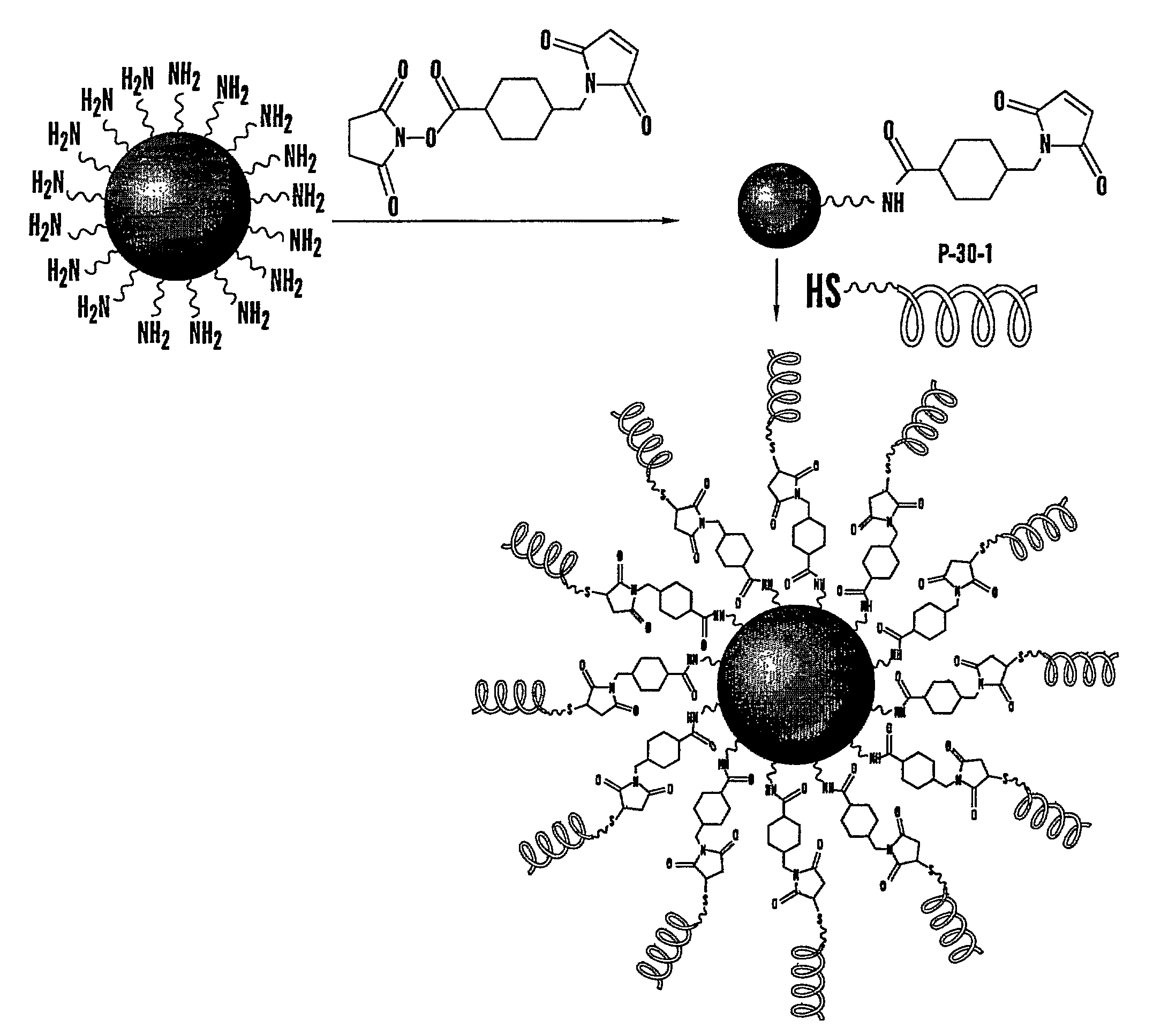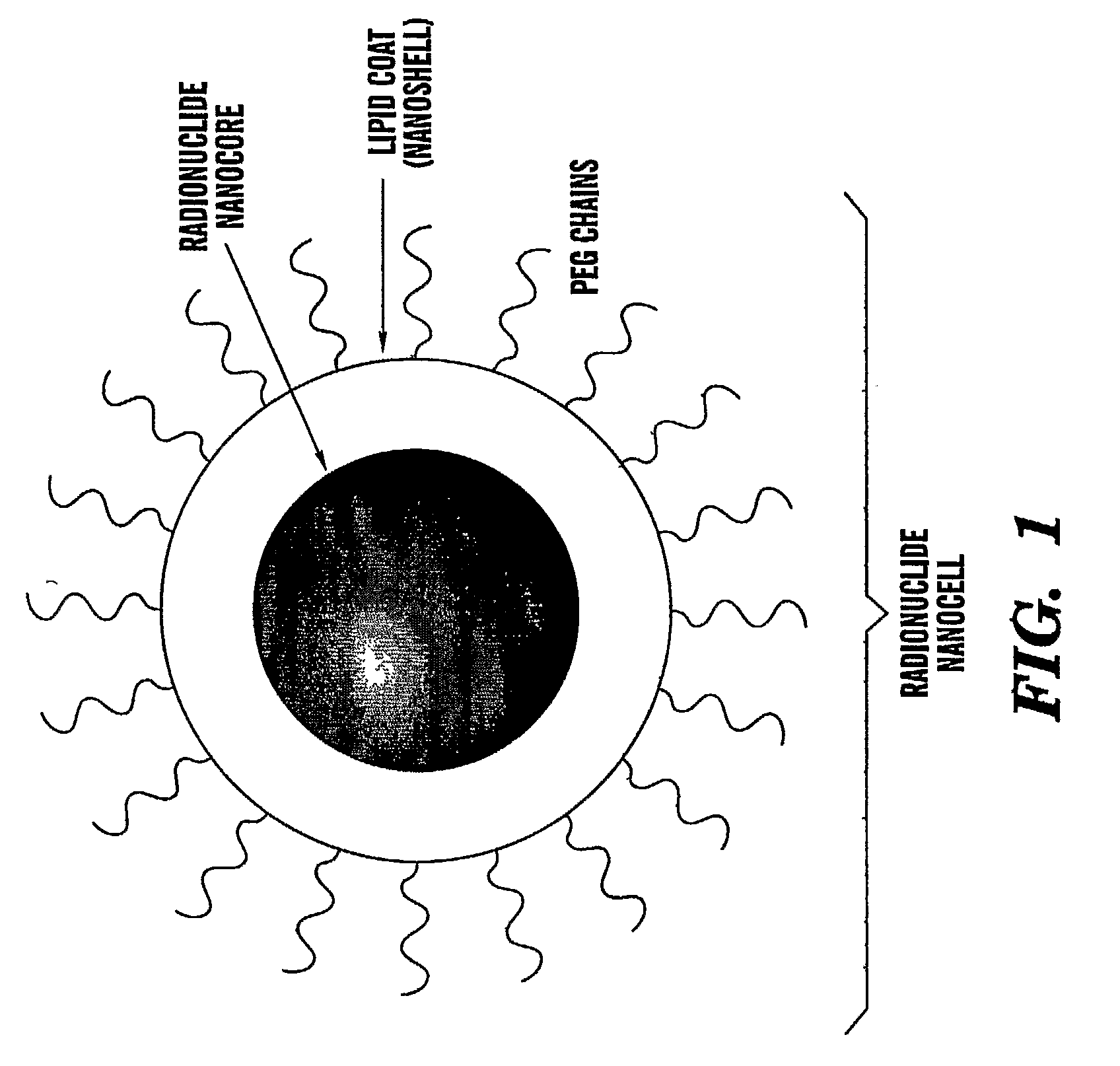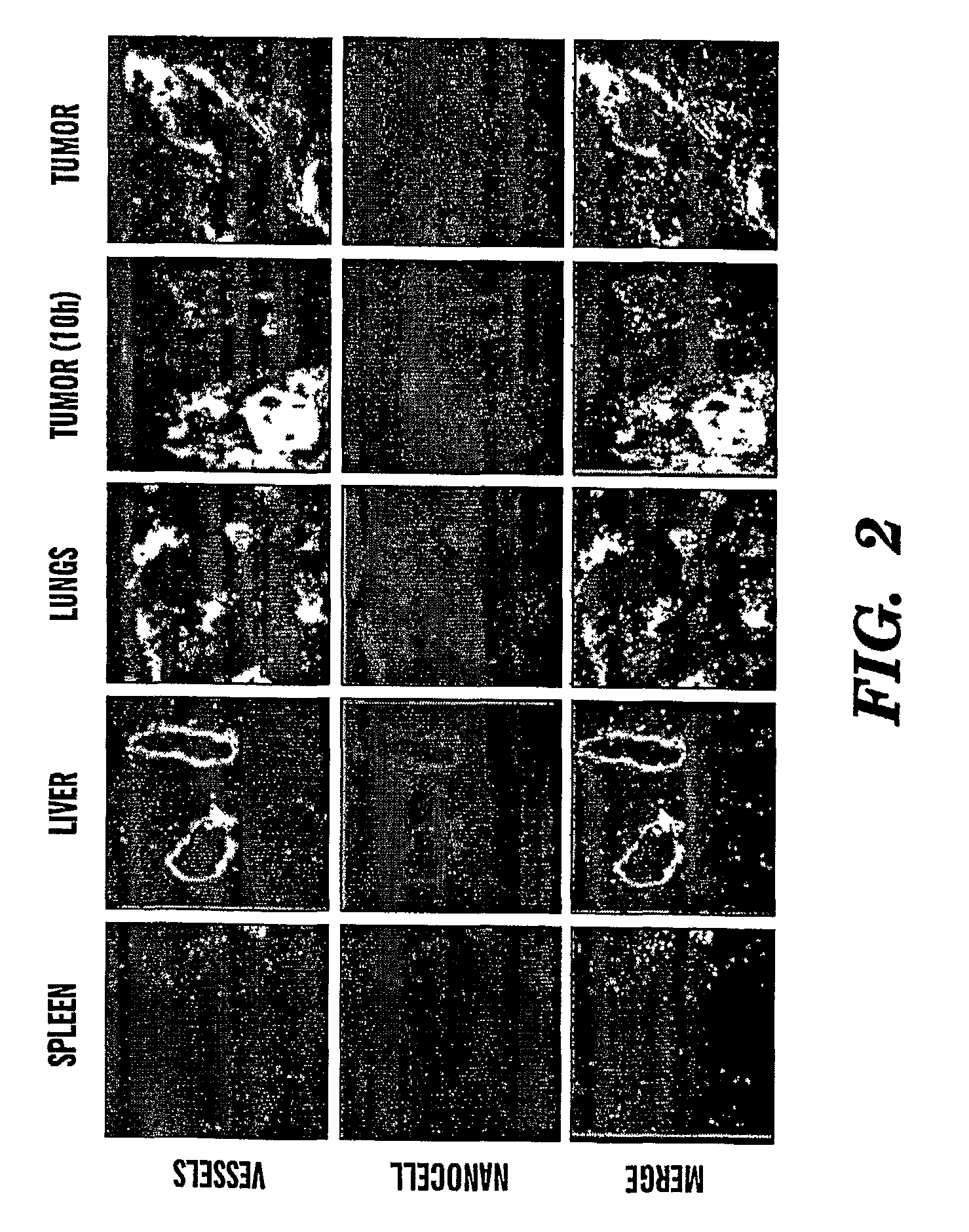Nanocells for Diagnosis and Treatment of Diseases and Disorders
a technology of cancer cells and tumors, applied in the direction of immunological disorders, drug compositions, therapy, etc., can solve the problems of inability to deliver specific imaging agents, inability to precisely deliver imaging agents, and inability to achieve tumor-specific imaging. to achieve the effect of fine tuning the delivery of specific drugs
- Summary
- Abstract
- Description
- Claims
- Application Information
AI Technical Summary
Benefits of technology
Problems solved by technology
Method used
Image
Examples
example 1
[0192]The present invention overcomes several limitations of using nanoparticles for imaging, including their insolubility and tendency to aggregate and the general distribution when injected into systemic circulation, which would prevent the discrimination between normal and diseased tissues. Various approaches have been made to keep them stable in suspension including the attachment of pegylated groups, or coating them with various functional groups and peptides for targeted delivery. However, such approaches still fail to overcome the potential for uptake by the reticuloendothelial system (RES) or uptake by normal tissues because of their nanoscale size.
[0193]The present invention describes a modified, nuclear nanocell, where the nuclear nanocore is a quantum dot or a nanoparticle that emits a radiation following excitation (FIG. 1). The encapsulation of the nuclear nanocore inside the lipid bilayer, and the presence of the PEG on the surface of the bilayer prevents the RES from ...
example 2
Preparation of Nanocells for Treatment of Asthma
[0211]Nanoparticles with dexamethasone were synthesized from PLGA using PVA as a stabilizer using an emulsion-solvent evaporation technique. The nanoparticles were then coated with a shell of lactose using a spray drying technique. The bronchodilator, salbutamol, was dissolved in the lactose solution prior to spray drying. The nanocell formed was then lyophilized overnight before being administered in vivo. For SEM, dehydrated nanoparticles were gold-coated on a carbon grid. They were analyzed using a Jeol EM (magnification, 3700×).
[0212]As shown in FIG. 5, electron micrograph revealed that the nanoparticles formed were spherical and were of a diverse size range from 5×101-20×103 nm. The nanoparticles were then coated with a lactose layer, which made the size of the particles in the 103 to 105 nm range.
[0213]Release Kinetics Characterization
[0214]Drug-loaded nanocells were suspended in 1 ml of PBS buffer or hypoxic-cell lysate and seal...
example 3
[0227]Despite major advances in the development in anticancer drugs and imaging agents, a major disadvantage is their lack of selectivity for malignant tissue. Currently, most common drug delivery systems and imaging agents target proteins that are overexpressed on the surface of cancer cells. Alterations to the normal function of the glycosylation machinery have been increasingly recognized as a consistent indication of malignant transformations and tumorigenesis. In many cases, these alterations result in the overexpression of specific cancer-associated carbohydrates, specifically on the malignant tissue. Due to the complexity of molecular interactions with carbohydrates, very few systems have been designed to specifically target carbohydrates for imaging and drug delivery purposes. Despite the use of lectins for detection of carbohydrates in different tissues, their low affinity, high molecular weight, the stability of their active structures and their complexity for selective ch...
PUM
 Login to View More
Login to View More Abstract
Description
Claims
Application Information
 Login to View More
Login to View More - R&D
- Intellectual Property
- Life Sciences
- Materials
- Tech Scout
- Unparalleled Data Quality
- Higher Quality Content
- 60% Fewer Hallucinations
Browse by: Latest US Patents, China's latest patents, Technical Efficacy Thesaurus, Application Domain, Technology Topic, Popular Technical Reports.
© 2025 PatSnap. All rights reserved.Legal|Privacy policy|Modern Slavery Act Transparency Statement|Sitemap|About US| Contact US: help@patsnap.com



